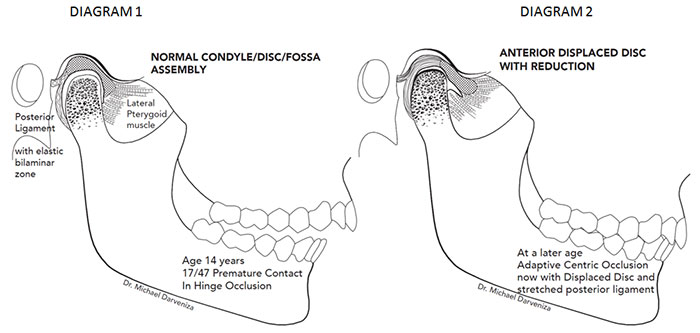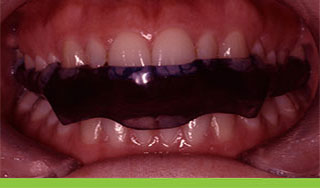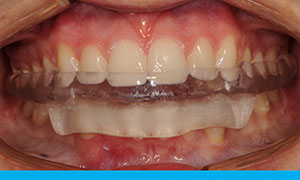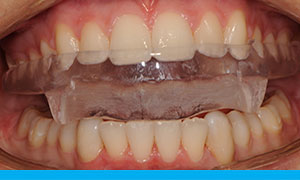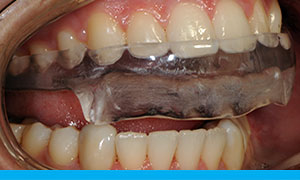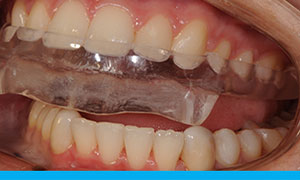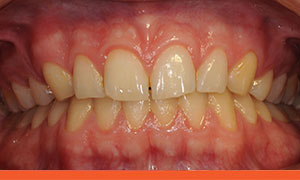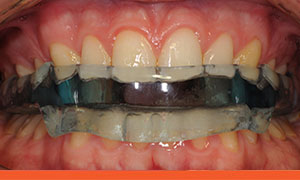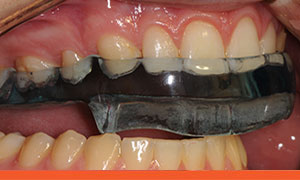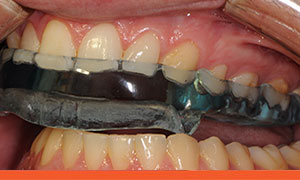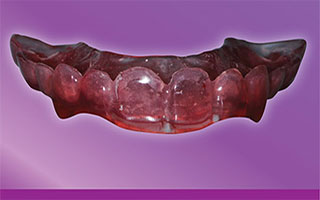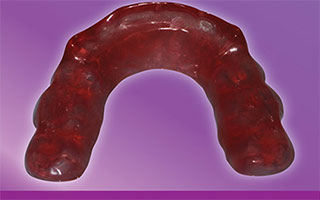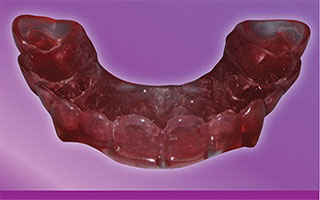Occlusal Splint Therapy
This Fully Protective Occlusal Splint has been the cornerstone in treating TMJ Disorder (TMD) and is the starting point in Occlusal (Bite) Therapy.
In childhood, the jaw joint discs are centred. However, as the teeth erupt into the mouth in a crooked manner, the TMJ discs usually displace out of position to allow the teeth to mesh better. Your Dental Specialist has evaluated that these ‘crooked’ teeth are the initial cause of the TMJ disc derangement / displacement and symptoms in the majority of TMJ patients.
The diagrams below explore and illustrate these clinical findings and in this case the second molars are the ‘crooked’ teeth that displace the TMJ disc.
Is there any fast fix?
Whilst there is no fast fix to relieve symptoms of the TMJ, splints and bite reconstruction is a gradual process, often over a year. It is because the disc has been displaced out of position for many years, usually starting from about 14 years of age, as illustrated in the diagram above.
To encourage the jaw to move back into alignment and support the muscles in the face, after first taking impressions of your mouth an occlusal splint is made. The splint is then custom fitted and adjusted. This is an hour long appointment, (not 10 minutes) and the splint is worn at night, and/or during the day if necessary and possible.
The two different splint designs are shown here. For more examples of splints take this link.
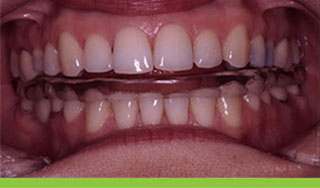
Example of a clear flat splint that allows unnatural ‘cow-like’
jaw movements to occur during sleep. Your Dental Specialist has witnessed on multiple occasions that this type of ‘aesthetic’ splint will make your symptoms worse so it is not recommended.
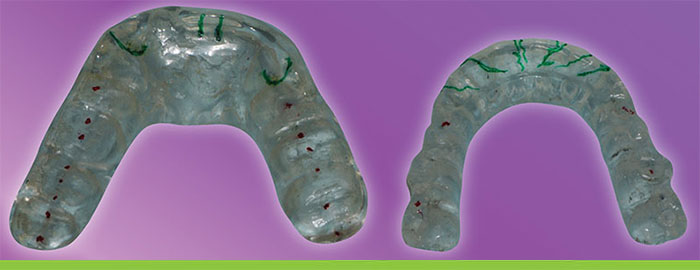
The biting view of the right splint shows green skid marks indicating ‘cow-like’ jaw movements have occurred. The splint on the left shows green marks indicating human protective jaw movements in forward, left and right. Note the red marks are balanced perfectly on the left splint but not the right splint. The left splint is recommended, however, the right splint will allow dangerous jaw movements to occur while you sleep during the night.
What is involved in occlusal splint therapy?
Occlusal splint therapy involves wearing, mainly at night, a hard, (but 100 times softer than teeth) acrylic resin (clear denture material) splint, usually over the top teeth, to create 4 protective bites often missing in the patient’s mouth.
NOTE: Soft splints and thin flat looking hard splints have been proven to make symptoms worse.
Ideally, a thick splint is fabricated to give maximum relaxation of facial specific muscles thus allowing displaced discs to re-locate back to the centre of the jaw joints. However, if it took many years for the discs to be displaced, it will take some time for them to completely re-centre.
Fully Protective Occlusal Splints – Showing 4 Bite Types
What is the purpose of a splint?
A splint is made to create a newly improved bite overlaying the patients poorly biting teeth. Many people find that from wearing the splint and even after just two or three adjustments the pain or clicking of the jaw has gone. Normal Occlusal Splint Therapy involves 4 splint adjustments over a 3 month period. Others find they need many more adjustments. These adjustments are required to keep pace with facial muscles relaxing right to left and the discs re-locating back into the centre of the joint.
We had one patient who stopped wearing the splint at night for a period of 3 weeks whilst on holidays as her pain had gone, only to find the pain came back immediately. She found there are great benefits to wearing the splint nightly, even if you do go on holidays. Another patient with severe TMJ disorder symptoms who had a totally unprotected bite had to wear a special daytime splint (overdenture) whilst on holidays so she could also eat some foods while wearing the splint.
All splints are made by expert prosthetist technicians here in Brisbane with a fast turnaround time from taking impressions to fitting.
Premature Tooth Wear – Age 22
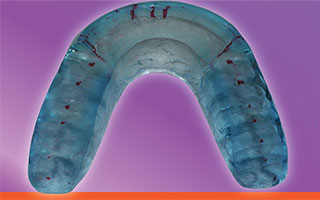
Fully Protective Occlusal Splint – View of the biting surface showing red bite registration marks indicative of a fully protective splint.
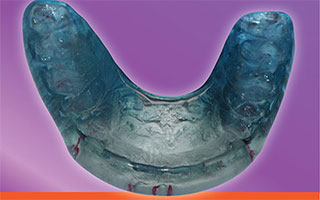
Internal view of splint – Note for this splint in the middle it is wide to prevent fracture if dropped on a tiled floor
Splints for Orthodontics.
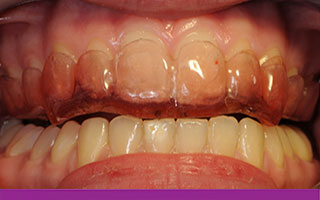
This 18 year old patient wanted a thin strong splint to prevent tooth movement following Orthodontics.
How are the splints adjusted?
Because your TMJ discs re-centre slowly and at a different pace from right TMJ to left TMJ you will need regular adjustments to the splint, as it will no longer be balanced left to right. The splint will only after a few days to a week after fitting not be even or balanced left to right sides. This unbalanced splint will tense the facial muscles and hinder further disc repositioning.
Splint Adjustments involve drilling the flat biting platforms (helicopter landing pads) on each side until the occlusal splint is once again even and balanced, ready for more disc re-centring.
How often do you need splint adjustments?
Splint adjustments will be required with some weekly, some monthly, and in some severe cases more often, as much as twice a week. Everyone is different as it depends upon how quickly your discs move and try to fully re-centre in the TMJ’s. The most effective results our patients have experienced are from wearing a splint as much as possible. Wearing the splint at night and while you sleep is the most important.
After several splint adjustments a relatively stable, healthy, reproducible hinge position of the jaw occurs. This then gives an opportunity to improve any of the 4 unprotected bites. This can be achieved by occlusal (bite) adjustments (spot grinding), of the bite to create a protective hinge bite. Then build up teeth to create left, right and forward protective bites. This is called Partial Bite Reconstruction.

